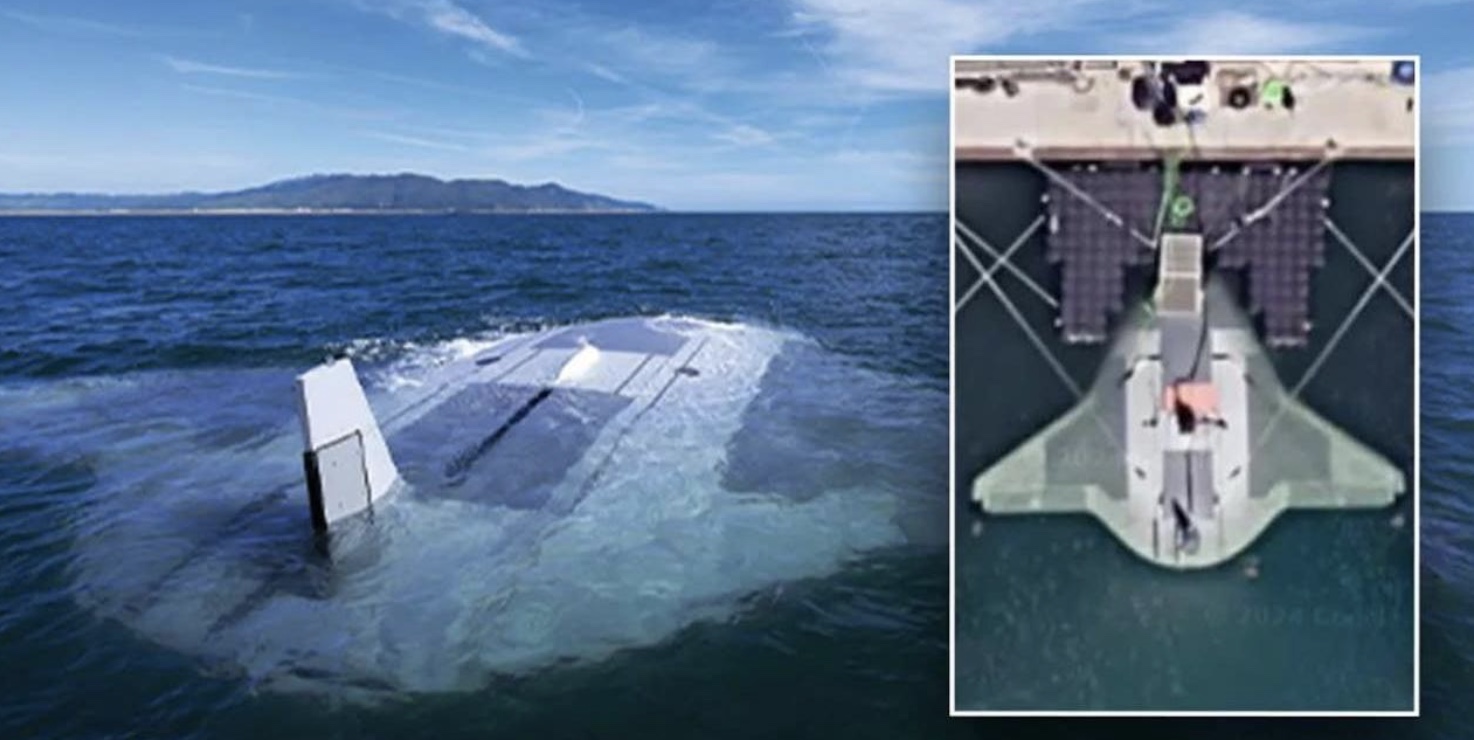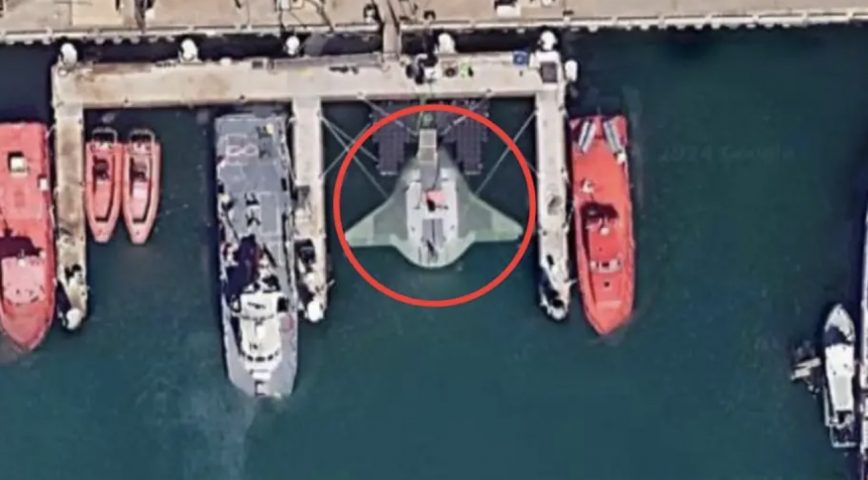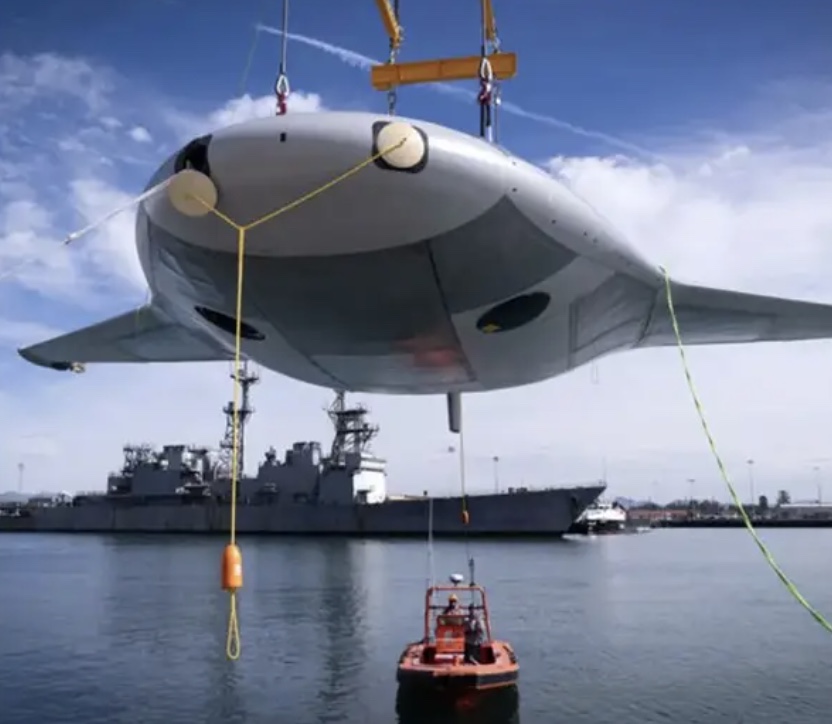Top-Secret US Aquatic Military Vessel Caught on Google Maps

A remarkable discovery has caught the attention of military enthusiasts and tech aficionados alike. A top-secret submarine prototype, known as the “Manta Ray,” has been identified on Google Maps by sharp-eyed users. The futuristic design of this autonomous vessel has sparked widespread intrigue, quickly making headlines and spreading across social media platforms.
Viral Sensation at Port Hueneme Naval Base
The Manta Ray was spotted docked at Port Hueneme naval base in California. Enthusiasts were quick to share images of the vessel, causing a viral sensation. Military and aeronautical buffs have been captivated by the rare glimpses of this advanced underwater craft. The Manta Ray’s sleek, innovative design immediately drew comparisons to its marine namesake due to its physical resemblance and its capability to lurk for extended periods deep underwater.

Northrop Grumman’s Ingenious Creation
The Manta Ray is the brainchild of Northrop Grumman, developed as part of a broader U.S. Navy initiative to enhance the nation’s long-range underwater fleet of unmanned vehicles. This state-of-the-art vessel represents a significant leap forward in underwater military technology. Northrop Grumman has been at the forefront of this development, ensuring the Manta Ray meets the rigorous demands of modern naval warfare.

Testing in Southern California
Earlier this year, the Manta Ray underwent extensive testing off the coast of Southern California. For several months, the defense giant conducted trials to ensure the vessel’s capabilities and readiness for real-world operations. Photos released by Northrop Grumman show the Manta Ray gliding gracefully underwater, demonstrating its advanced design and engineering prowess.
Endurance and Innovation
Dr. Kyle Woerner, program manager for the Defense Advanced Research Projects Agency (DARPA), praised the Manta Ray’s endurance and innovative design. “The submarine can remain on the sea floor for long stretches without the need to refuel,” he explained. This capability is crucial for extended missions where conventional submarines would need to surface or return to base for refueling.
Modular Design and Rapid Assembly
One of the Manta Ray’s standout features is its modular design, allowing for rapid assembly in the field from modular subsections. Dr. Woerner highlighted this in his statement, noting, “Our successful, full-scale Manta Ray testing validates the vehicle’s readiness to advance toward real-world operations after being rapidly assembled in the field.” This modular approach not only speeds up deployment but also ensures the submarine can be shipped directly to its intended area of operation, conserving energy that would otherwise be expended during transit.
Future Testing and Potential Uses
The Defense Advanced Research Projects Agency (DARPA) is now collaborating with the military to schedule further testing and explore potential future uses for the Manta Ray. This phase will be critical in determining the vessel’s role within the Navy’s broader strategy and its integration into existing naval operations. The flexibility and advanced capabilities of the Manta Ray make it a prime candidate for a variety of missions, from surveillance to direct engagement.
Strategic Importance in Global Military Landscape
Industry experts believe that the development of the Manta Ray and similar technologies is a priority for the U.S. Navy. Keeping pace with advancements made by Russia and China in drone technology is essential for maintaining strategic superiority. The Manta Ray represents a significant step forward in this technological race, showcasing the U.S. commitment to innovation in military capabilities.
The Manta Ray’s potential impact on naval operations cannot be overstated. Its ability to operate autonomously for extended periods and its advanced stealth capabilities provide a significant tactical advantage. Whether for reconnaissance, offensive operations, or support roles, the Manta Ray is poised to enhance the Navy’s operational flexibility and effectiveness.
Public and Expert Reactions
The public and experts alike have reacted with a mix of awe and curiosity. The Manta Ray’s appearance on Google Maps has fueled speculation and discussions about the future of military technology. For many, it is a tangible glimpse into the cutting-edge developments that are often shrouded in secrecy. The excitement generated by this discovery underscores the public’s fascination with advanced military technology and its implications for national security.
The sighting of the Manta Ray on Google Maps has provided a rare look at one of the U.S. Navy’s most advanced underwater vessels. This autonomous submarine represents the cutting edge of military technology, combining endurance, stealth, and innovative design. As further testing and development continue, the Manta Ray is set to play a crucial role in the future of naval operations. Its discovery has not only captivated military enthusiasts but also highlighted the rapid advancements being made in the field of unmanned underwater vehicles. The Manta Ray stands as a testament to the ingenuity and forward-thinking of Northrop Grumman and the U.S. Navy’s commitment to maintaining technological superiority in an increasingly competitive global landscape.
4o

